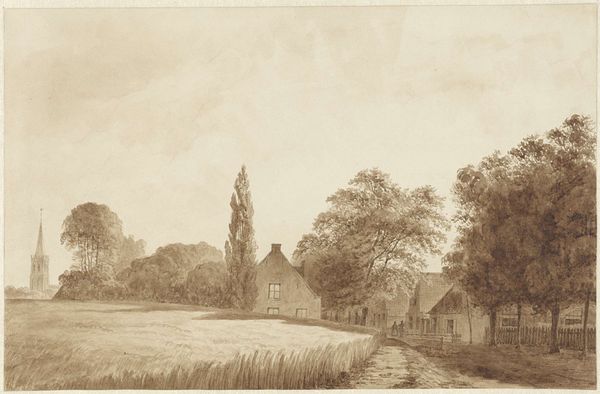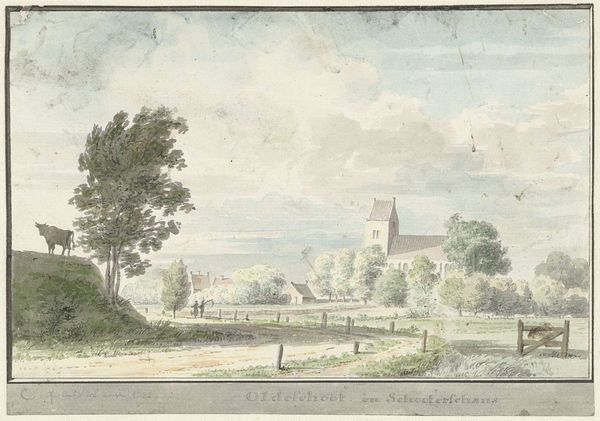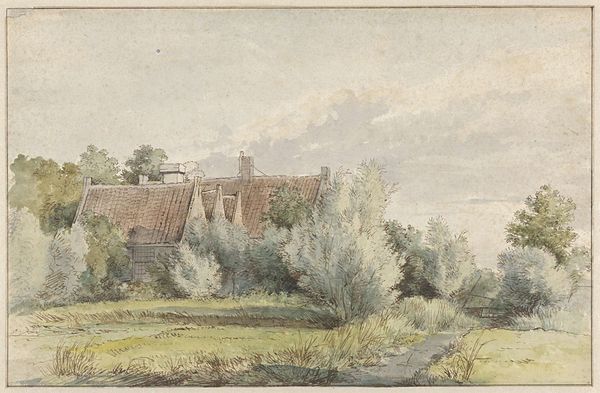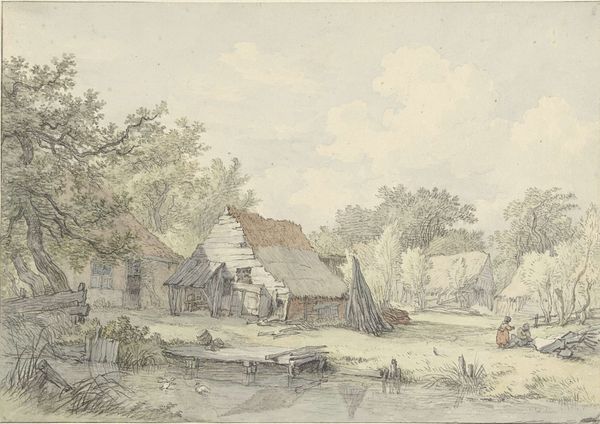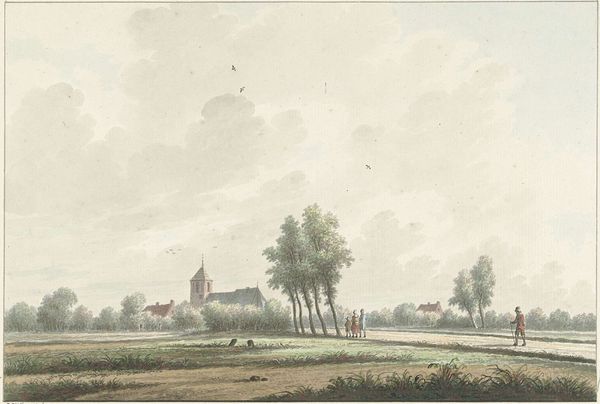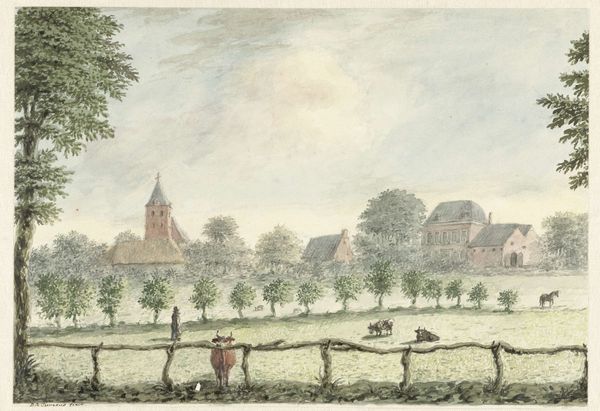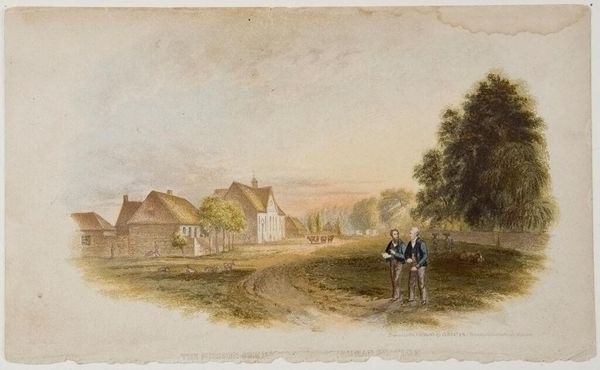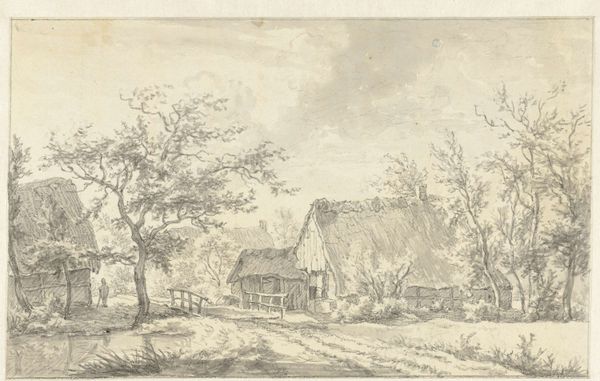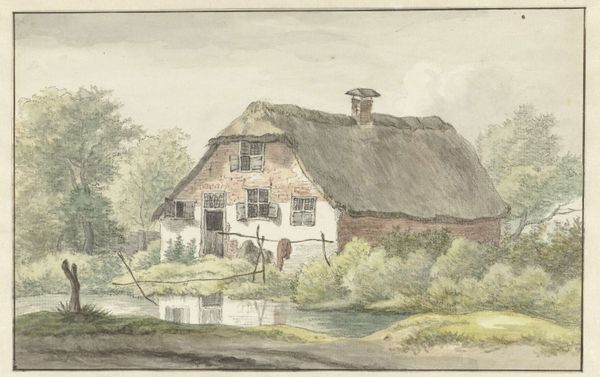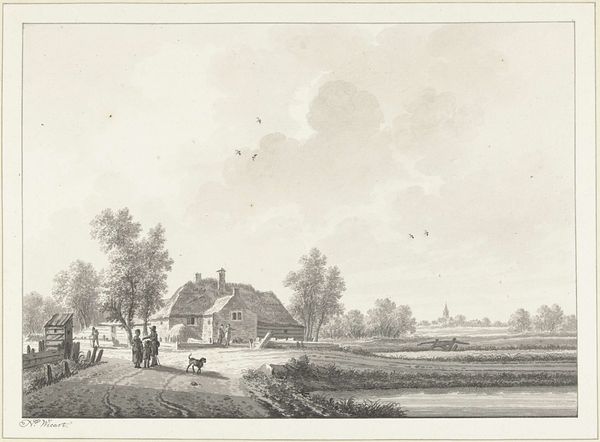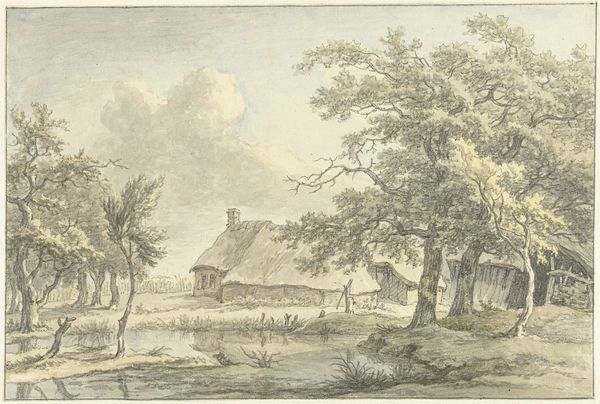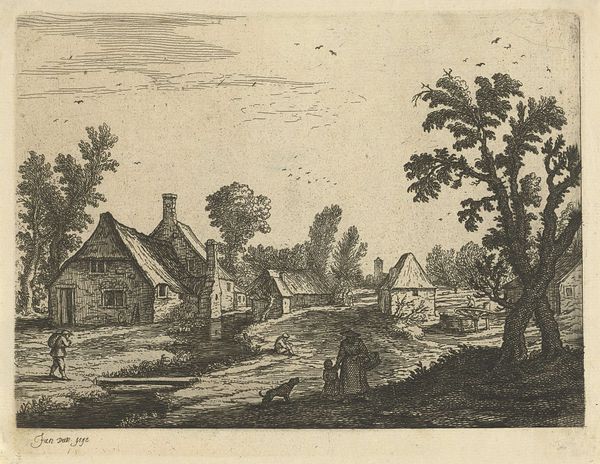
painting, watercolor
#
neoclacissism
#
painting
#
landscape
#
watercolor
#
cityscape
#
watercolor
Dimensions: height 236 mm, width 338 mm
Copyright: Rijks Museum: Open Domain
Art Historian: Editor: Editor: We're looking at "Landschap met boerderij," or "Landscape with Farmhouse," a watercolor by Jan Hulswit, created sometime between 1776 and 1822. It has this wonderfully subdued, almost dreamlike quality. I'm curious, how do you interpret this work within its historical context? Art Historian: Thanks for that initial reaction. What I see is the embodiment of Dutch Neoclassicism's impact on landscape art. Consider that Hulswit was working in a period marked by significant social and political shifts, the reverberations of revolution and calls for societal restructuring. Given this unrest, the "idealized landscape," became incredibly popular. Look at the fence for instance: while quaint, its dilapidated state could signal disruption even in pastoral scenes. What societal commentary might Hulswit be subtly inserting? Editor: That's a very compelling point, using landscape to make commentary, but shouldn’t a work be clearly positive or negative? What’s so special about showing it so... matter-of-factly? Art Historian: Here, subtlety becomes its own form of activism. This period was characterized by increased literacy among all social classes and a thirst for debate around issues that included economics and even slavery. The composition gently guides the viewer, placing the seemingly unideal fence between them and the ideal buildings, compelling viewers to reflect on the present. Also, by using watercolors, which at the time may have been associated with "feminine" artistic skill, does he add another voice into that commentary? Does the scale seem deliberately intimate? Editor: So you're saying it isn't simply a pretty landscape, it could reflect on the social unrest or issues of representation in plain sight. Thank you! It definitely changes how I see Hulswit's intentions. Art Historian: Indeed. Engaging with these works through a modern critical lens offers insights into marginalized or often ignored historical discourse. Thanks for allowing me to learn from you.
Comments
No comments
Be the first to comment and join the conversation on the ultimate creative platform.

